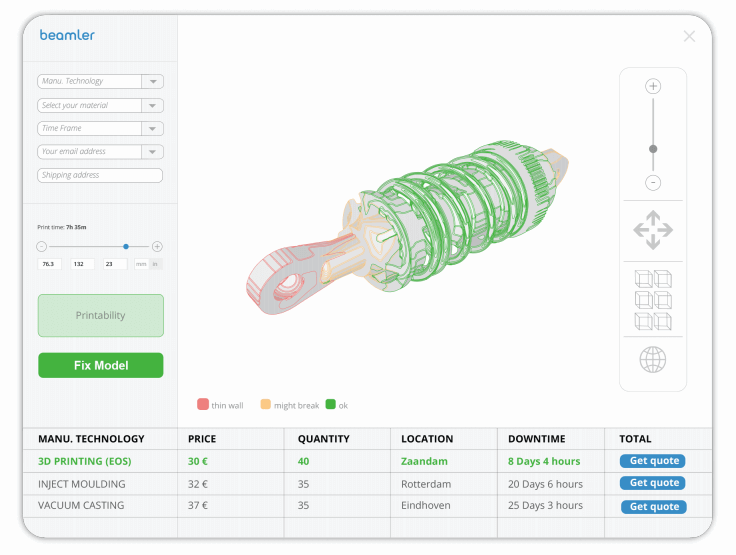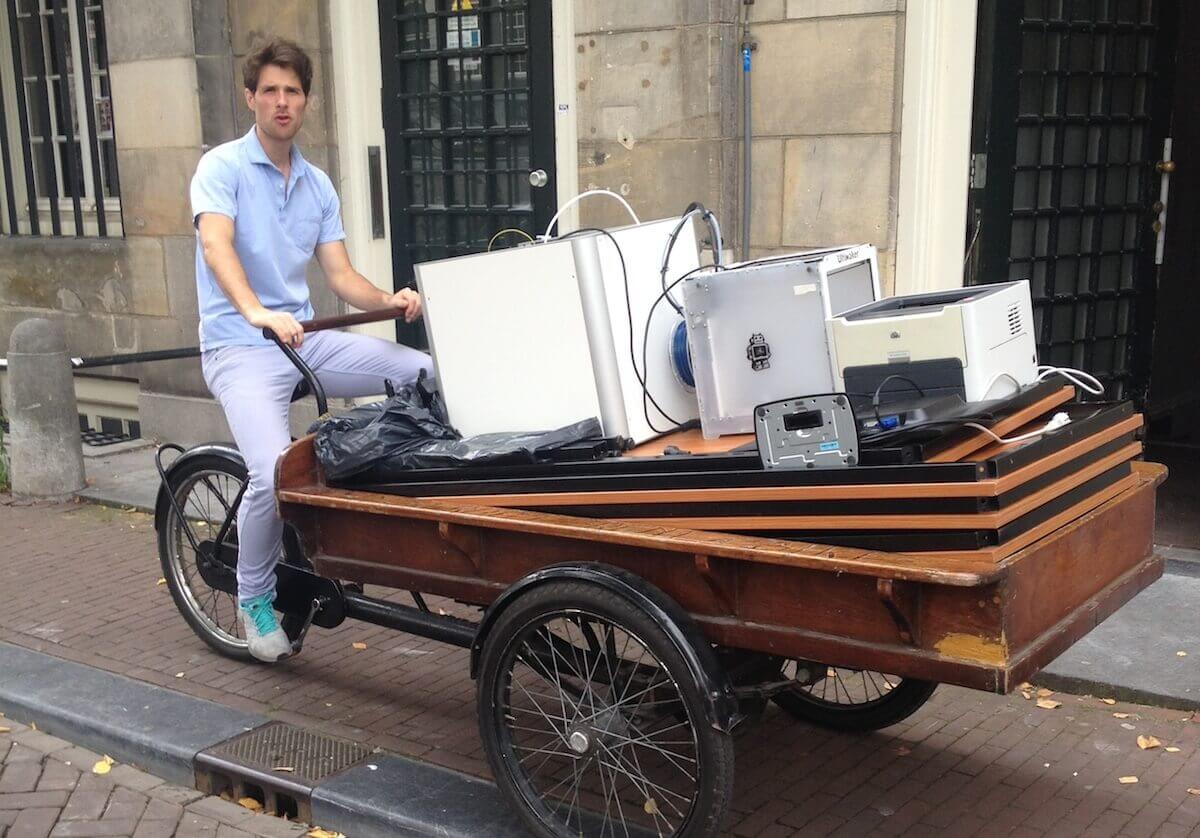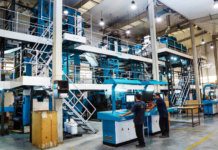Not long ago, it would have been easy to brush off 3D printing as a ‘neat party trick’ but not something that will find a place in commercial business processes. For Willem-Jan van Loon, 3D printing was love at first sight when a University of Amsterdam economics classmate introduced him to a YouTube video showing how it works. Turns out his enthusiasm was well-founded: In 2014, a Wohlers Report projected the worldwide 3D printing industry would grow from $3.07B in revenue in 2013 to $12.8B by 2018, and exceed $21B by 2020.
Van Loon wants to expedite the digital transformation that is occurring in traditional manufacturing sectors. He founded Beamler in 2016 and transformed it into a cloud 3D printing company which enables engineers and designers to produce their material on a global network of machines. And because it is cloud based, the engineers can receive feedback and diagnostic information in real time.
Tharawat Magazine had the opportunity to sit down with Van Loon to discuss his company, the emerging industry trends, and what the future of this technology could have in store.

Beamler is a cloud software for 3D printing company. Can you talk about what a cloud 3D printing company does exactly?
So, a little background on the 3D printing industry. Of course, you have the 3D printer, the materials for the machine and the software. People either buy software or they get free software with the printer but they often are not very good. What we do is to allow the printers to connect to more than one computer, they connect to the cloud. The cloud enables our clients to connect to several printers at the same time around the world and print their products.
Who uses your software at this stage? For whom is it built?
We see large manufacturers struggling with the transition from the old to the new way of making products; we call this digital manufacturing. The client is, for example, a large Original Equipment Manufacturer who for instance makes small screws for cars. They say ‘Hey, the software is very interesting for me because it connects me to a worldwide 3D print network. That way, I don’t have to buy a very expensive machine’. Secondly, they can get the product faster to markets through our software. Let’s say this company wants to send a prototype to a customer in Japan. Currently, this process will take about three weeks. They would have to print it in their own country and then ship it to Japan. But with our software, they just upload a file and they’ll print the object in Japan, in a 3D print shop right around the corner from the customer. By doing it this way, they’ll have it in days rather than weeks.
Can you talk about how your software is used by a customer? How specifically does it solve pain points for them?
What we do is give a plug-and-play cloud software program to large manufacturers which connect them to a 3D printing global network. A key advantage in using our software is the 3D print network automatically gives feedback on the project to the engineer. So, let’s say I am an engineer at a large company in Germany and I have to make a specific part. I can build it in the software and instantly see on screen what is the best price, where the best location is, can I print it, what is the best material, and what is the weight of the material. So before I’m going to produce it, I already have the results of when it will be printed. If the product is not printable, you will see the 3D model in red. You would have instant feedback so you know you have to change aspects of the design. If it’s green, it’s ready to go and, with one click, you send it to the machine.

It would be easy to assume that factories already know they need 3D printing and how to deal with 3D printing but clearly that’s not the case. Where do you see the technology impacting the manufacturing industry?
3D printing has been used for the last 30 years for prototyping. But the new solution is to produce small batches of products as well as end parts. For example, a metal printer at General Electric is the only machine in the world that makes end parts that can be used in an airplane, in a Boeing. So that’s where we’re going. And for me, the 3D printer may be just a machine, but it is a symbol of the growing digital manufacturing trend. This means that you, as a company, can manufacture something around the corner and not just in China anymore. That is for me the essence of 3D printing and the new way of digital manufacturing.
Forging a path as an entrepreneur with something this new and innovative cannot be easy. What has that entrepreneurial journey been like for you? What have been your main challenges?
I think for me, it’s like 99% goes wrong and then when the 1% happens, it gives you so much energy and you can carry on. I think that’s the journey we’ve been on the last three years. It’s a very big challenge. I have some people around me who I can call to give me advice. My family has an entrepreneurial background in real estate so for the emotional part, I will go to them. This journey has really been a roller coaster, especially in the beginning, but it gets easier and slowly things are falling into place.
How do you assess the adoption process for this technology? What do you see as some of the obstacles standing in the way?
The technology is there and we are making a transition into digital manufacturing. But still, this is a fact, 68% of the large manufacturers experience barriers and operation issues. This hinges on the culture of a company. For example, I spoke with a Dutch company and a similar company in Germany. At the German company, the head of innovation is really open to rethink how the industry is shaping. And what you see in Germany, manufacturing 4.0, that’s what we call the digital manufacturing industry, is by far the most developed in the world, and the same with Japan. In the Netherlands, we’re behind Germany and that’s also what I see in the meeting rooms. So it’s the people who don’t see it. And the problem is that all those companies are not going to be manufacturers anymore, they are going to be digital enterprises. And they will be competing with Google or Facebook if they don’t watch out.
[ms-protect-content id=”4069,4129″]

In terms of the sense of urgency, do you feel like companies should embrace it as being immediate or do you feel like they have the next two to three years to figure this out? And how do you address stragglers who still brush it off as hype?
People once said in five years everyone will have a 3D printer at home and now eight years later, that’s not the case. So I cannot really put it in a timeframe but you see it already happening and the Germans are more developed than the other countries. About three years ago, 3D printing was a hype. But I would say the hype has been gone for a year and now you will really see the adoption of 3D printing. To be honest, I thought 3D printing was only interesting for the prototyping but as you see, more and more business models are coming to the market and really disrupt the market. There are already examples where you can produce 10,000 parts cheaper with a 3D printer than with existing old technology. There are also exciting things happening with the new generation of 3D printers. For example, there’s a new printer that came out that Google invested 100 million in that is going 25 to 100 times faster. So the average run time is seven hours and they brought it down to seven minutes.
The future is that manufacturers don’t operate any machines anymore.
A great fear that many businesses face is the fact that increased automation or an increase in digitization means laying off people and destroying employment and then not being able to create new employment. Do you feel that 3D printing could add to this effect in the global manufacturing sector?
That’s a really good question. I think what you see here in the Netherlands is that there is a lot of work in development and a demand for people who can go over big data and analytics so there are new jobs created. I think the technology that is out there now can replace them for sure so yes, there will be job losses. But we don’t have enough developers, people who studied math, we need more of those kind of people to control those machines so it will be less manual labour and more using your hands behind a computer screen.
[/ms-protect-content]














